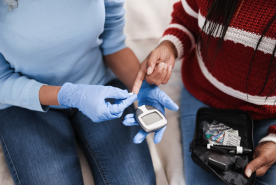Gout and CKD are linked: gout raises CKD risk and vice versa. Learn about symptoms, diagnosis, and risk factors.
Epidemiology
- Gout has been steadily increasing worldwide, and is now the most common type of inflammatory arthropathy in adults.1 In the United States alone, its prevalence more than doubled between the 1960s and the1990s,2,3 and it is now estimated at 3.9% of U.S. adults (8.3 million adults — 6.1 million men and 2.2 million women).2,4
- Hyperuricemia is also common, with a prevalence of 6-8% in healthy adults, and a prevalence of 1 in 3 adults who have uncontrolled hypertension and several cardiovascular risk factors.5
- The prevalence of CKD has been increasing, with estimates at 14.8% of adults in the United States,6 and 11-13% globally.7
- 37 million American adults have CKD and 1 in 3 Americans is at risk of developing it.6
- There is a bidirectional relationship between CKD and gout. Patients with CKD are at increased risk for gout, and those with gout are at increased risk of CKD.
Barriers to Management
- Physicians often limit their focus on treating gout to only acute attacks and do not address it as a chronic and progressive disease.8
- Urate lowering treatment is not prescribed often enough and even when it is prescribed, it is often under-dosed.8
Learn more about regactory gout.
References
- Roddy E, Doherty M. Epidemiology of gout. Arthritis Res Ther.2010;12:223. https://arthritis-research.biomedcentral.com/articles/10.1186/ar3199
- Zhu Y, Pandy BJ, Choi HK. Prevalence of gout and hyperuricemia in the US general population: The National Health and Nutrition Examination Survey 2007-2008. Arthritis Rheum.2011;63:3136-3141.
- Lawrence RC, Felson DT, Helmick CG, et al. the National Arthritis Data Workgroup. Estimates of the prevalence of arthritis and other rheumatic conditions in the United States: part II. Arthritis Rheum.2008;58:26-35.
- Centers for Disease control and prevention (CDC). National Center for Health Statistics (NCHS). National Health and Nutrition Examination Survey Questionnaire (NHANES) 2007-2008. Hyattsville, MD: U.S. Department of Health and Human Services. Centers for Disease Control and Prevention: 2009. Available at: http://www.cdc.gov/nchs/nhanes/search /nhanes07_08.aspx. Accessed December 10, 2017.
- Juraschek SP, Kovell LC, Miller ER, et al. Dose-response association of uncontrolled blood pressure and cardiovascular disease risk factors with hyperuricemia and gout. PLoS ONE. 2013;8: Article ID e56546.
- United States Renal Data System. 2016 USRDS annual data report: Epidemiology of kidney disease in the United States. National Institutes of Health, National Institute of Diabetes and digestive and Kidney Diseases, Bethesda, MD, 2016.
- Hill NR, Fatoba ST, Oke JL, et al. Glaobal prevalence of chronic kidney disease – a systematic review and meta-analysis. PLoS ONE 11(7): e0158765.doi:10.1371/journal.pone.0158765.
- Doherty M, Jansen TL, Nuki G, et al. Gout: why is this curable disease so seldom cured? British Med J. 2012;71:1765-1770.

















